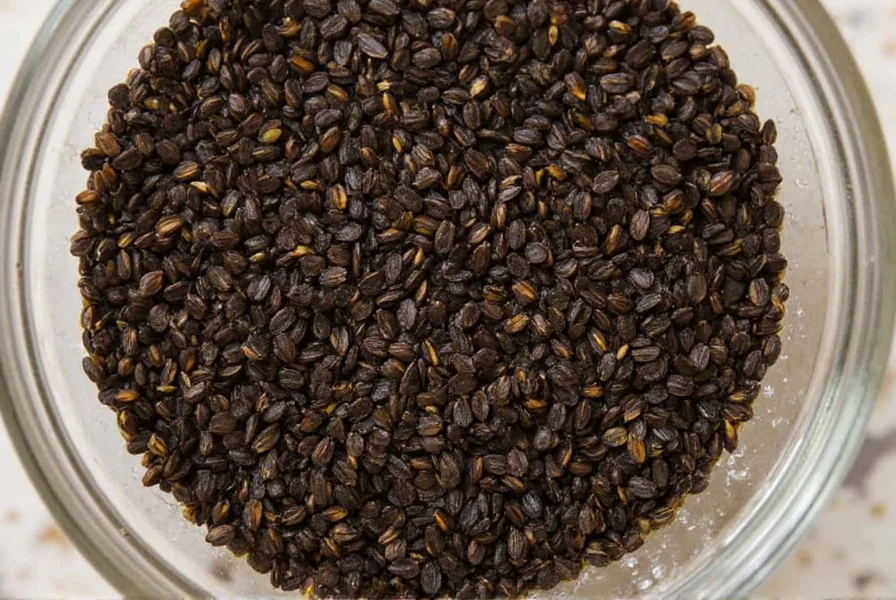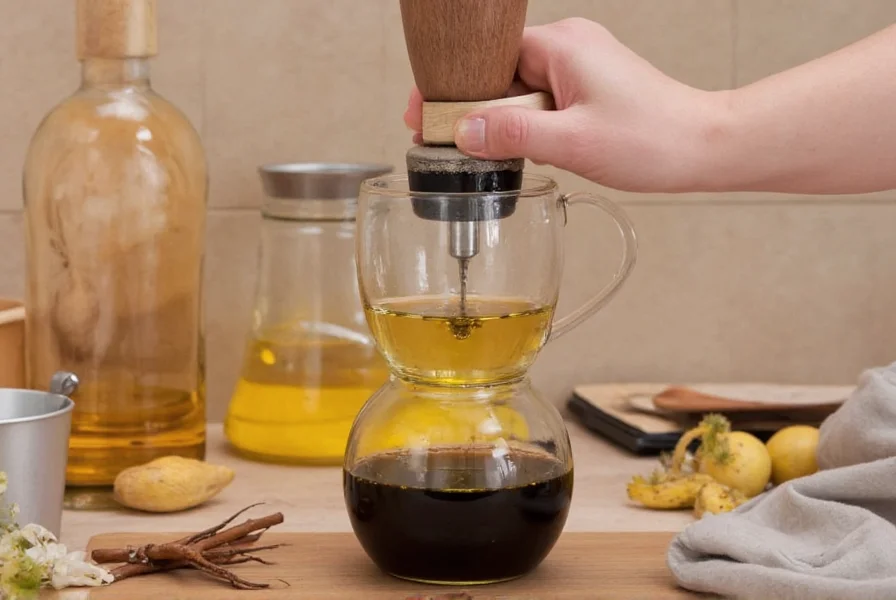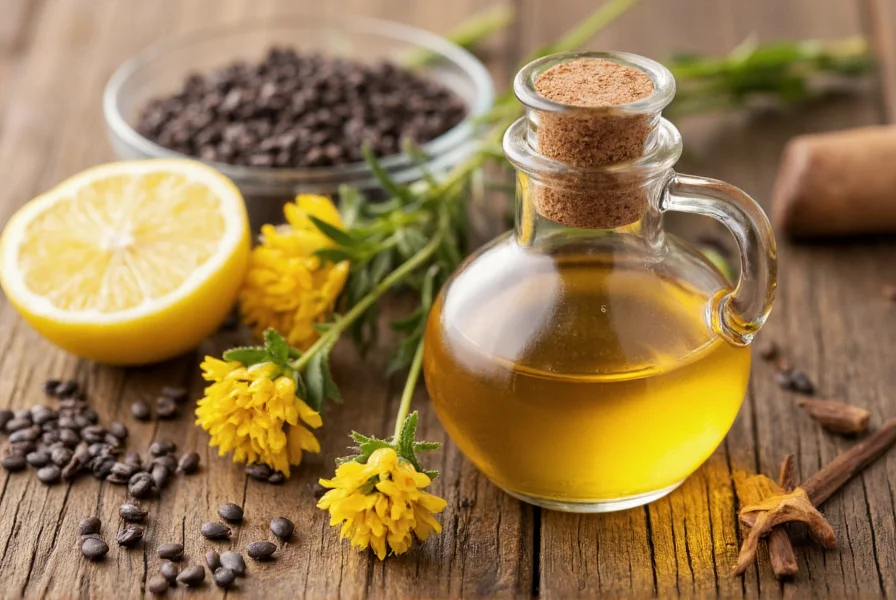Black cumin seed oil, derived from Nigella sativa seeds, has been used for centuries in traditional medicine systems across the Middle East and South Asia. While commercial cold-pressed oil remains the safest option, many people seek homemade alternatives to ensure purity and avoid additives. This comprehensive guide details the only viable home method while explaining why other approaches pose significant risks.
Understanding Black Cumin Seed Oil Production
Professional black cumin seed oil production uses industrial cold pressing equipment that maintains temperatures below 120°F (49°C) throughout extraction. This temperature control preserves heat-sensitive compounds like thymoquinone, the primary bioactive component responsible for many of the oil's purported health benefits. Home extraction cannot perfectly replicate commercial processes, but careful cold pressing yields the safest homemade product.

Required Materials for Safe Home Extraction
Attempting to make black cumin seed oil requires specific equipment to minimize risks:
| Item | Purpose | Important Considerations |
|---|---|---|
| High-quality Nigella sativa seeds | Source material | Must be 100% pure, organic, and free from mold |
| Mechanical oil press | Extraction equipment | Must operate below 120°F; avoid electric presses that generate heat |
| Glass storage containers | Oil preservation | Dark amber glass protects from light degradation |
| Fine mesh strainer or cheesecloth | Filtration | Removes seed particles for longer shelf life |
Step-by-Step Cold Pressing Method
This is the only recommended approach for how to extract black seed oil at home without compromising safety:
- Seed preparation: Clean 1 cup of black cumin seeds thoroughly, removing any debris. Spread on a clean towel and air-dry completely (24 hours). Proper drying prevents mold during storage.
- Temperature control: Place seeds in the refrigerator for 2 hours before pressing. Cold seeds yield better oil extraction and help maintain low temperatures during pressing.
- Mechanical pressing: Feed seeds slowly into a manual oil press, collecting the oil in a clean glass container. Stop pressing if the equipment becomes warm to the touch.
- Filtration: Strain the oil through a fine cheesecloth to remove any remaining seed particles that could promote spoilage.
- Storage: Transfer to dark glass bottles, filling to the top to minimize air exposure. Store in a cool, dark place or refrigerate for maximum shelf life.
Dangerous Methods to Avoid
Many online sources promote unsafe DIY black cumin oil preparation techniques that pose serious risks:
- Solvent extraction: Using hexane or other solvents creates fire hazards and leaves toxic residues. This method requires laboratory conditions and should never be attempted at home.
- Heat extraction: Boiling seeds in carrier oils destroys heat-sensitive compounds and creates potentially harmful byproducts.
- "Infused oil" methods: Simply soaking seeds in olive or coconut oil does not extract true black cumin seed oil and creates a product with significantly different properties.

Quality Assessment and Storage
Properly made homemade black cumin seed oil recipe should be:
- Deep amber to reddish-brown in color
- Strong, distinctive aroma (not rancid or musty)
- Thin consistency that flows easily
Store your oil in the refrigerator for up to 3 months. Discard if you notice cloudiness, separation that doesn't resolve with gentle warming, or any off odors. For longer storage, freeze in ice cube trays then transfer to airtight containers (up to 6 months).
Safety Considerations
Black cumin seed oil is generally safe when used appropriately, but important precautions include:
- Perform a skin patch test before topical use
- Consult your healthcare provider before internal use if pregnant, breastfeeding, or taking medications
- Never use oil extracted with solvents or high heat
- Keep away from children and pets
Commercial vs. Homemade: What Research Shows
Studies comparing commercial and homemade black cumin seed oil reveal significant differences in quality. Research published in the Journal of Food Science and Technology (2022) found that properly cold-pressed commercial oils contain 0.5-1.5% thymoquinone, while homemade versions typically contain 0.2-0.7% due to less precise temperature control. The same study noted higher levels of oxidation products in homemade oils stored beyond 2 months.
Frequently Asked Questions
- Can I make black cumin seed oil without special equipment?
No, proper black cumin seed oil extraction requires mechanical pressing equipment that maintains low temperatures. Alternative methods like solvent extraction are dangerous, and simple infusion techniques don't produce true black cumin seed oil. - How long does homemade black cumin seed oil last?
When properly stored in dark glass containers in the refrigerator, homemade black cumin seed oil remains stable for 2-3 months. Freezing extends shelf life to 6 months. Always check for signs of rancidity before use. - Why can't I just boil black seeds in olive oil?
Boiling destroys heat-sensitive compounds like thymoquinone and creates potentially harmful byproducts. This method produces an infused oil with different properties than true black cumin seed oil, which requires mechanical extraction from the seeds themselves. - Is homemade black cumin seed oil as effective as commercial?
Commercial cold-pressed oils typically contain higher concentrations of active compounds due to precise temperature control during extraction. Homemade versions generally have lower thymoquinone content (0.2-0.7% vs 0.5-1.5% in commercial) and shorter shelf life, but can still provide benefits when properly made and stored.











 浙公网安备
33010002000092号
浙公网安备
33010002000092号 浙B2-20120091-4
浙B2-20120091-4